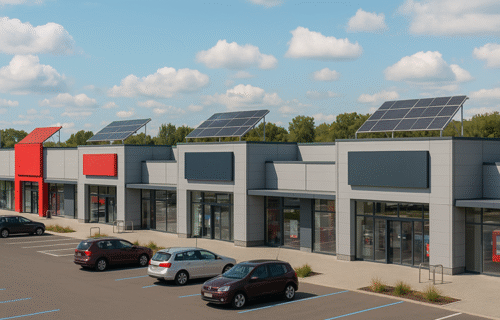Retail parks continued to shape the landscape of Poland’s retail property market through the third quarter of 2025, confirming their position as the country’s most dynamic commercial real-estate format.
According to several professional market analyses, new completions between July and September amounted to roughly 78,000 square metres, all of which came from newly built or extended retail parks. This added to a total of around 220,000 square metres delivered since the beginning of the year. Developments such as S1 Włocławek, Przystanek Karkonosze in Miłków, and M Park Ciechanów were among the largest openings of the quarter.
Industry analysts note that developers have clearly shifted their activity away from traditional shopping centres toward smaller, open-air retail formats. At the end of the third quarter, about 600,000 square metres of retail space was under construction nationwide, with retail parks accounting for the overwhelming majority of this pipeline.
The country’s total stock of modern retail space reached approximately 13.6 million square metres, spread across nearly 700 facilities, resulting in a national average of around 360 square metres per 1,000 residents.
Vacancy levels in the major cities remained low and relatively stable, averaging below 3 percent, with the tightest markets in Warsaw and Szczecin and moderate increases recorded in Kraków and Łódź. Market observers suggest that where older shopping centres face higher vacancy, owners increasingly opt for functional conversions—often turning former hypermarket or mall spaces into mixed-use or residential projects.
Retail-brand activity also picked up. Several international and domestic chains opened their first Polish outlets or expanded into new cities, while some large-format operators adjusted their space requirements or closed underperforming stores. The variety of new openings included fashion, accessories, fitness, and food-service concepts, reflecting renewed tenant confidence after a subdued period in 2024.
Online channels continue to complement physical retail. Grocers and lifestyle brands are broadening their presence on delivery and marketplace platforms, while new quick-commerce services have entered regional cities.
Overall, the sector’s development in 2025 highlights the strength of convenience-focused retail. With smaller, energy-efficient formats close to residential areas and easy road access, retail parks remain the preferred investment and leasing option for both national and regional operators heading into 2026.
Source: Colliers, BNP Paribas Real Estate, and Cushman & Wakefield
